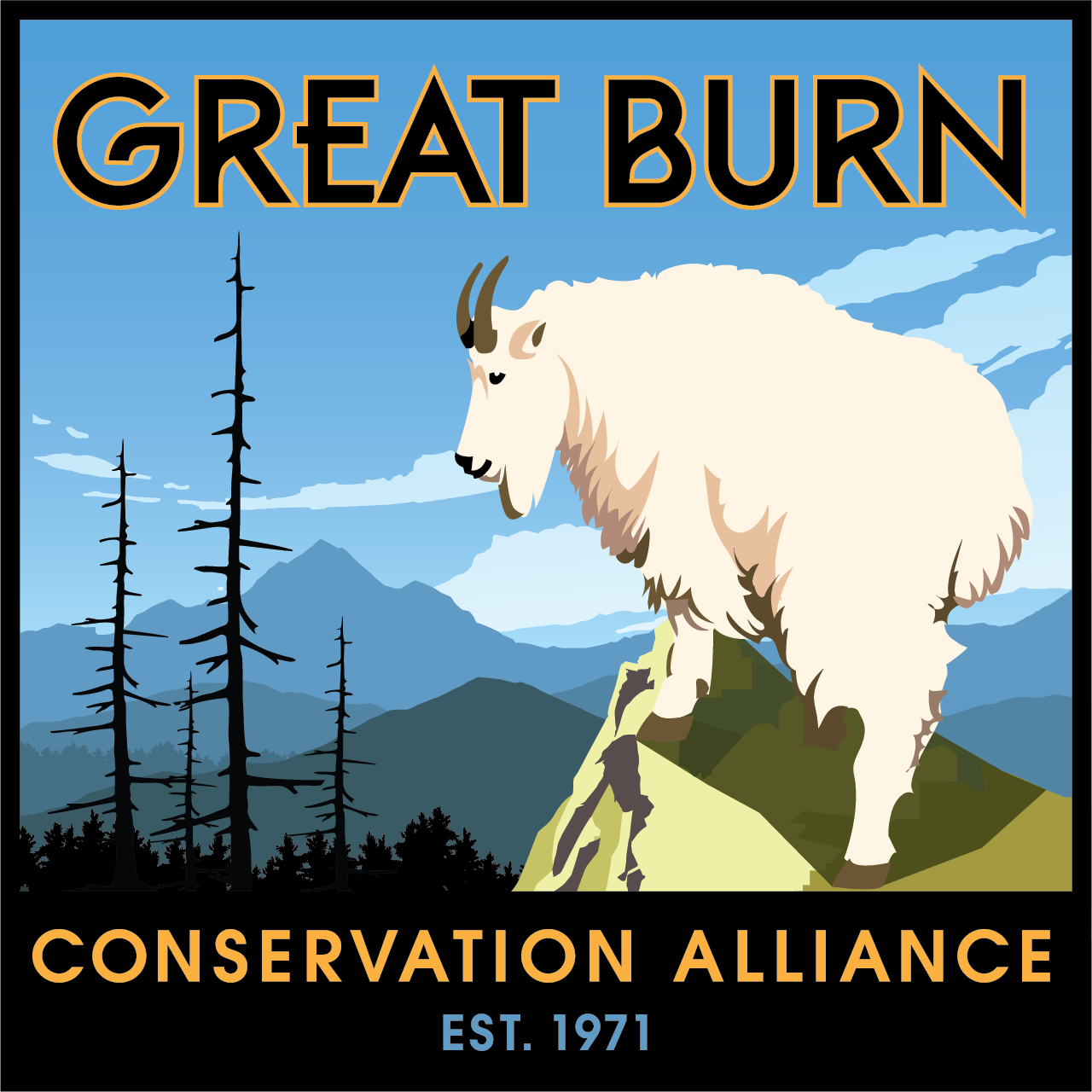Here’s the story of the worst fieldwork hitch I’ve had to date–in other words, my first hitch of the 2025 field season with the Great Burn Conservation Alliance.
To start off positively: it never rained, we got out a day earlier than planned, and my breakfast banana-zucchini bread that the horse outfitter’s wife generously provided the recipe for was a success. That’s it.
Kalle Fox spraying invasive weeds during field training before her first hitch.
On day one, my car battery died before heading out to the Clearwater Crossing base camp. On day three, my feet started suffering from achilles tendinitis—a result of going from spending half the year in my flat homeland Florida to hiking 30 miles with 2000 feet of gain in the first two days— and it would plague me for the remainder of the hitch and after. On day four, I switched to wearing my Teva sandals to hike four miles (one-way) up a steep, slippery trail, and then broke down over my physical limitations and forgetting how to properly prepare for camping six nights in the backcountry. On day five, I slipped while crossing a creek with my spray pack on, and face planted into the water (no herbicide leaked into the creek, fortunately). And on day six, I limped six more miles back down to the basecamp with two gallons of leftover herbicide on my back, my day pack dangling behind it in a way that bumped uncomfortably against my lower back. Throughout it all, I watched my fellow crew of younger, longer-legged lads outpace and outprep me— a near-thirty-year-old woman with a handful of field seasons under her belt and yet not enough specialization nor ambition to land full-time work in the state she found her ethos in public land stewardship.
This is not the best testimony for recruiting future restoration stewards, I’m aware. Fortunately, there was more to report than just my physical misery:
Field Crew Bonding
The Great Burn itself is the strangest but most beautiful graveyard I’ve entered, and the only one I’ve set up a tent in. The first two days, we hiked through blooming wildflowers and skeletal tree stands into a realm of old-growth cedars, with some of the largest trunks I’ve seen in a state known for firs, Ponderosas and larches. The hike that reduced me to tears ended up taking me to the stunning French Lake that could rival the views at Glacier National Park. The invasive plants we sprayed up and down the trails–spotted knapweed, st. john's wort and oxe-eye daisy–already began wilting a day later. In between the physical agony and comedy of it all, I surveyed and stewarded a landscape I’d never been to before, which was exactly why I accepted the role, and why I’m writing this with my feet iced and elevated per Chris’ suggestion for treating tendinitis.
Before finding the position listing through Vicki Watson’s newsletter, I was heavily considering leaving Montana after living and working here for five years, in and out of temporary jobs, housing, friendships and relationships. The fluctuating circumstances of my late twenties diverted me from remembering. Then, in the first few months of the new administration change, I read headline after headline of attacks on public lands: mass firings in the Forest Service and National Park Service; proposals to sell existing federal land to the highest private bidder and open up invaluable forests to logging; and the biggest personal offense, the layoff of 32,000 Americorps service members dedicated to education, community building, and stewardship across the country. The collective sense of rage and injustice emanating from me and thousands of other Americans could have burned another three million acres, if not more.
Readying backpack sprayers during the first hitch of the season in the Lolo National Forest
Through the rage came clarity: I couldn’t abandon Montana’s public lands now, nor my passion for stewardship in the context of natural resource conservation. And I love weeds as a niche within the land management realm.
The Great Burn Conservation Alliance graciously offered me the chance to continue that work of taking care of landscapes that took care of me throughout my twenties. I’d never been in the Great Burn Recommended Wilderness before and didn’t have a special connection to it, but working with those who do provides the necessary context to care.
What an honor, then, to experience a landscape of history unbeknownst to most of the country on foot. What an honor to feel the impact on my flesh, instead of being miles removed from it in an office setting (which I’ll have my 40’s and 50’s to transition to if need be). What an honor to steward the land at a time when institutional powers won’t.
The next hitch begins soon. My feet have recovered for the most part. May the act of restoration never cease across all kinds of bodies.
Lolo National Forest




